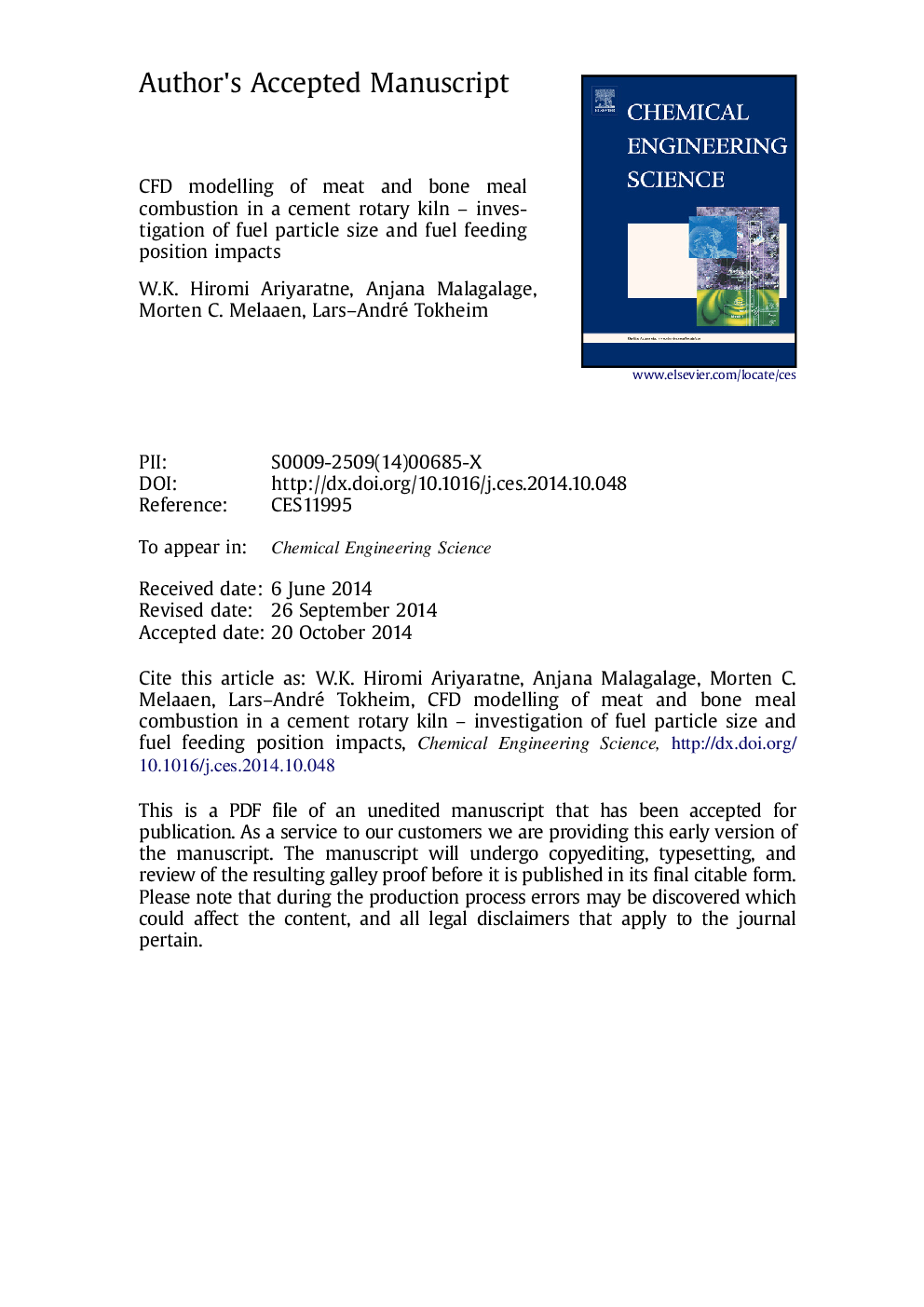| Article ID | Journal | Published Year | Pages | File Type |
|---|---|---|---|---|
| 6590634 | Chemical Engineering Science | 2015 | 44 Pages |
Abstract
Because of high environmental impacts and energy costs, many cement plants tend to substitute waste-derived fuels for fossil fuels. However, knowing the impacts of using such waste fuels is important for improving the process economy. This paper presents a three-dimensional computational fluid dynamics (CFD) modelling study conducted for a cement rotary kiln. Simulations are performed using commercial CFD software and are conducted for coal, as well as for meat and bone meal (MBM) combustion. The effects of fuel feeding position and fuel particle size on the combustion characteristics are discussed. Annulus fuel feeding gives faster devolatilization and char combustion than central-tube fuel feeding, and the effect is significant for larger particles. The devolatilization is much faster for small particles. For a given fuel, the larger the mass-weighted mean particle diameter, the lower the char burnout. The negative effect of a large mass-weighted mean particle diameter on the char burnout is more significant for fuels having high fixed carbon content. However, the impact on the gas temperature due to poor char burnout depends on the fixed carbon content of the fuel.
Keywords
Related Topics
Physical Sciences and Engineering
Chemical Engineering
Chemical Engineering (General)
Authors
W.K. Hiromi Ariyaratne, Anjana Malagalage, Morten C. Melaaen, Lars-André Tokheim,
